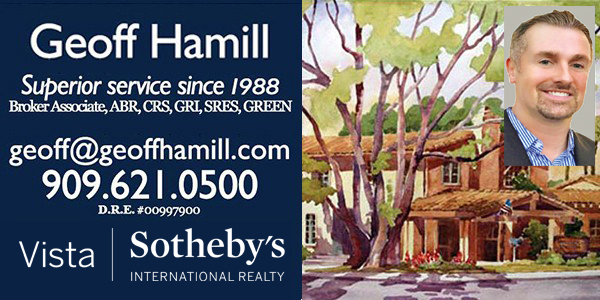Readers comments: 10-29-21
Paralyzed by polarization
Dear editor:
Have you ever wondered how and when history defining movements lose the momentum to influence human affairs, and in their decline cause disastrous disruptions of the socioeconomic and political infrastructure that supported their period of domination over the course of human history?
And have you been experiencing a soul disturbing angst following the events of January 6, 2021, and wondering what the ultimate impacts of the insurrection will have on our nation’s, and yes, our community’s futures?
Will the decades of increasing social, economic, and political polarization over issues that have been ignored for decades be the prequel to a course correcting deflection point, or momentum disrupting tipping point?
For the regular readers of the COURIER, you have read my opinions on significant socioeconomic and environmental issues that I think can no longer be ignored. None of these has caused me more concern than the threats to the integrity of our community and our nation posed by the politics of polarization. I have repeatedly named who and what I think were, and continue to be responsible for an intentional, politically driven attempt to divide us into factions over issues that are corrosive to the foundational principles that served as our nation’s history defining movement.
In their commentary, Interfaithfully speaking: Uniting Claremont as one congenial community, the Reverends Strickland and Buchholz made the case that “we cannot afford to continue this ideological charade that there are two polarizing positions on environmentalism,” while ignoring the “human responsibility to do our best to care for the earth” as advocated by the nonpartisan Citizens Climate Lobby.
I would add, that we cannot claim to be, or strive to be a community, unless we embrace and intentionally act on the “human responsibility to do our best to care for” our community and each other. By using all available means to promote and live our community’s core values, we can in very real and tangible ways, increase affordable housing opportunities, realize racial, gender, and socioeconomic equity, assure access to mental and physical health care, shelter the homeless, and locally implement solutions to climate change.
Like the Reverends Strickland and Buchholz, I consider the challenge considerable and achievable, requiring that: we think about the significance of the issues and what is at stake; that we put aside our differences that obscure our core values that call us to care for our community, our nation, and our earth; and most importantly, that we intentionally act both individually and collectively to identify and work to eliminate the polarizing trigger points that keep us from “uniting Claremont as one congenial community.”
The choices we make in this moment of our history will determine if we are participants in either a much needed course correcting deflection point that reestablishes both our commitment to the vision of our founding documents’ preambles and our Constitution as the means to “secure the blessings of liberty to ourselves and our posterity.” By overcoming the inertia imposed by polarization on our civic lives, we can take collective and congenial actions that advance our core values locally, and by holding our elected representatives at all levels to the of government to the same, we can reassert the power and authority of we the people to keep alive the inspired vision of representative democracy embodied in our founding as the United States of America.
However, if we do nothing, the already tattered preambles to our founding documents, and the neglect of our Constitution, will signal the end of the American experiment, and proof that a “house [community, nation, or world] divided against itself cannot stand.” And in the paralysis caused by polarization, we the people will be powerless to prevent the numerous social, economic, environmental, and political tipping points, which when triggered will inevitably be unpredictably disruptive, if not catastrophic.
And finally, while staffing the Aging-Next booth at Village Venture, I had the opportunity to chat with my junior colleague on the council and former Mayor Opanyi Nasiali and his wife Kathryn. They were out-and-about carrying placards to promote their initiative called Concerned Citizens to Save American Democracy, which aptly captures the clear and present danger of the concerns raised here.
We are fortunate in Claremont to be the beneficiaries of a heritage that places an expectation on its citizens to be informed and engaged in the ongoing governance of our city, and are provided numerous opportunities to do so. Our community also encourages the formation of non-profit service and special interest organizations, most of which are formed with the goal of providing a service to residents or advancing a position on an issues that will improve our Community’s quality of life. Unfortunately and even with a tradition of engaging significant issues civilly, respectfully, and with reference to established policies, polarization has become an atmosphere that poisons even our own local body politic.
With this in mind, and preferring that solutions accompany criticism as a means to address a concern, I would propose that those who agree with this critical commentary and that there is an urgency to act, then plan to attend a soon to be announced town hall meeting to discuss and establish by consensus, the core values we want to anchor our community’s civic life. My hope would be that by engaging in such an intentional, collective action, we will experience the profound negative impact polarization politics has had on every aspect of civil society, including the undermining of the two essential relationships on which our democratic republic was founded, an abiding sense of the unity of “we the people,” and a confidence that a those we elect to public office can be trusted with the authority and power to act on behalf of “we the people.”
Please email your interest in attending meeting to putclaremontfirst@gmail.com.
Joe Lyons
Claremont
Speeding on Indian Hill Boulevard
Dear editor:
On the very day in 2016 that I was moving into my new home in Claremont, I watched a neighbor’s dog who had momentarily gotten out get killed by a speeding car that didn’t bother to slow down nor stop after the accident.
And yesterday early in the afternoon, five years later, another speeding car totaled the back half of a car legally and properly parked in front of my next door neighbor’s house and hurled it a good 10 feet forward. This driver, too, did not bother to stop.
This is what life on northbound Indian Hill Blvd., between 10th Street and Foothill, is like. I was in my kitchen when I heard that sickening metal-on-crunching metal sound and, running out, saw pieces strewn about. The back few feet of the car—that is often used to shuttle my neighbor’s two toddlers—accordioned into inches with only a yellow child’s racket visible.
The northbound side of Indian Hill, just after the 10th Street stoplight, has a particular problem: drivers—freed from the Village and seeing the multi-lane Foothill as some sort of a finish line—race up while still in our narrow two-lane street. There are parked cars, families strolling, and students walking back-and-forth from school. You see many of these drivers fiddling with their phones as they floor the gas pedal. You feel their impatience. Over the years, there have been a number of accidents here and uncountable near-misses. You would think that one would get used to the sound, or the dead animals the speeding cars leave behind but you don’t.
After some discussion on Claremont Connects and/or Nextdoor a couple of years ago, our police department placed a portable speed radar on the southbound side for a few days, and then removed it. I myself spoke of this informally with two city councilpersons. There were genuine expressions of concern but, ultimately, no action. I was told by a long-time resident “good luck” getting the city to put a speed bump or some such to help the situation.
Meanwhile, the races go on. I fear that the next car hit will have a person in it. Or there will be a cyclist who goes unseen as she huffs it up the boulevard. Or a speeding, distracted, rush-hour driver, trying to cut a few seconds from their commute, will hit a child who has run into the street—something children do, unpredictable as they are.
It is time to fix this problem: a gentle “speed hump”—not the bone-rattling come-to-a-dead-stop kind but the kind that get you to reduce speed by a few MPHs as you roll over them. Or a permanent solar-powered speed radar like we have on southbound Mountain just north of Butte.
From experience, multiple city leaders—all good, hardworking people, and friends besides—will reach out to me with genuine concern. Please don’t. Rather, just fix this! So many years later, I still hear the wailing of my neighbor carrying the limp body of her dog into her house. I pray never to hear this sound again, nor see the body of a neighbor’s child so carried.
Iraj Isaac Rahmim
Claremont




Readers’ comments: December 5, 2025